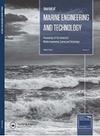IF 4.4
4区 工程技术
Q1 Engineering
引用次数: 0
摘要
企业只有通过保持质量,发展和提高自己,才能在竞争环境中保持自己的地位和进步。在这个方向上,他们需要进行高质量的测量和分析。为此,开发了不止一种质量改进方法。提高质量的技术之一是失效模式和影响分析(FMEA)方法。FMEA是一种操作管理和产品开发方法,它根据故障的相似性、概率、可检测性和严重程度对故障进行分类,以分析系统潜在的故障类型。它是一种专注于在生产阶段避免产品和过程中的风险并记录这些活动的技术。它的目的是防止不良质量,处理可能导致产品缺陷的潜在风险,识别可能的缺陷类型,并确定其后果和严重程度。本研究将燃油驳船与船舶的加油作业、燃油驳船的靠泊和锚泊、燃油转运过程、燃油驳船的离泊和航次准备分为三个阶段进行处理,并对每个阶段的危险进行了定义。运用FMEA对加注作业危害进行识别,降低作业风险,并提出建议。本文章由计算机程序翻译,如有差异,请以英文原文为准。
GEMİLERDE YAKIT İKMALİ OPERASYONUNDA GERÇEKLEŞMESİ MUHTEMEL KAZALARIN HATA TÜRÜ VE ETKİLERİ ANALİZİ İLE AZALTILMA ÇALIŞMASI
It is only possible for companies to maintain their position and advance in the competitive environment by preserving their quality and by developing and improving themselves. In this direction, they need to make quality measurements and analyses. For this purpose, more than one quality improvement method has been developed. One of the techniques for enhancing quality is the Failure Mode and Effect Analysis (FMEA) method. FMEA is an operations management and product development method that classifies failures according to similarity, probability, detectability, and severity to analyze potential failure types of a system. It is a technique that focuses on avoiding risks in products and processes during the production phase and documenting these activities. Its purpose is to prevent poor quality, address potential risks that may cause product defects, identify possible types of defects, and determine their consequences and severity. In this study, the bunkering operation between the fuel barge and a ship, the berthing and anchoring of the fuel barge, the fuel transfer process, the unberthing of the fuel barge, and the preparation for the voyage were handled in three stages and the hazards were defined for each stage. Bunkering operation hazards have been identified by using FMEA have been conducted to reduce operational risks, and suggestions have been made.
求助全文
通过发布文献求助,成功后即可免费获取论文全文。
去求助
来源期刊

Journal of Marine Engineering and Technology
工程技术-工程:海洋
CiteScore
5.20
自引率
0.00%
发文量
0
审稿时长
>12 weeks
期刊介绍:
The Journal of Marine Engineering and Technology will publish papers concerned with scientific and theoretical research applied to all aspects of marine engineering and technology in addition to issues associated with the application of technology in the marine environment. The areas of interest will include:
• Fuel technology and Combustion
• Power and Propulsion Systems
• Noise and vibration
• Offshore and Underwater Technology
• Computing, IT and communication
• Pumping and Pipeline Engineering
• Safety and Environmental Assessment
• Electrical and Electronic Systems and Machines
• Vessel Manoeuvring and Stabilisation
• Tribology and Power Transmission
• Dynamic modelling, System Simulation and Control
• Heat Transfer, Energy Conversion and Use
• Renewable Energy and Sustainability
• Materials and Corrosion
• Heat Engine Development
• Green Shipping
• Hydrography
• Subsea Operations
• Cargo Handling and Containment
• Pollution Reduction
• Navigation
• Vessel Management
• Decommissioning
• Salvage Procedures
• Legislation
• Ship and floating structure design
• Robotics Salvage Procedures
• Structural Integrity Cargo Handling and Containment
• Marine resource and acquisition
• Risk Analysis Robotics
• Maintenance and Inspection Planning Vessel Management
• Marine security
• Risk Analysis
• Legislation
• Underwater Vehicles
• Plant and Equipment
• Structural Integrity
• Installation and Repair
• Plant and Equipment
• Maintenance and Inspection Planning.
 求助内容:
求助内容: 应助结果提醒方式:
应助结果提醒方式:


